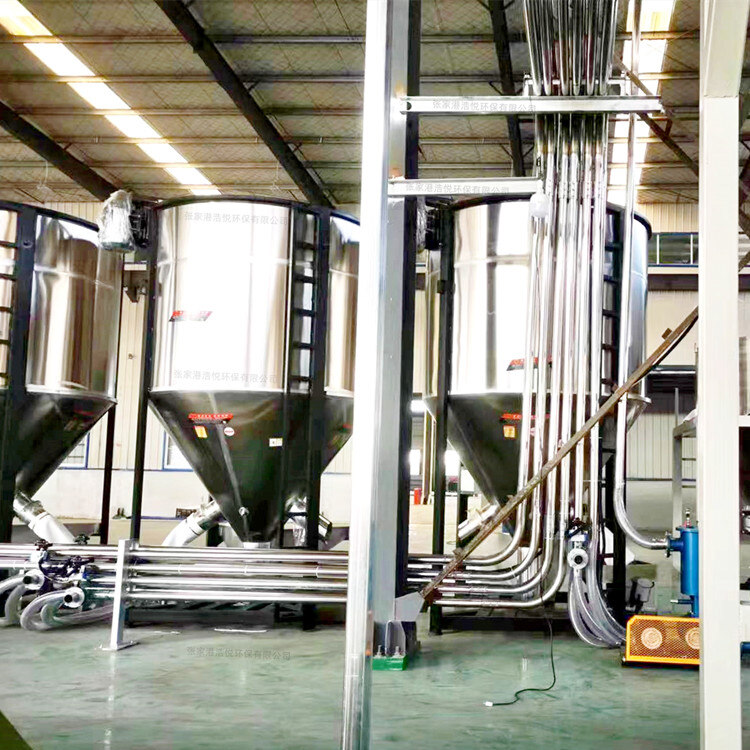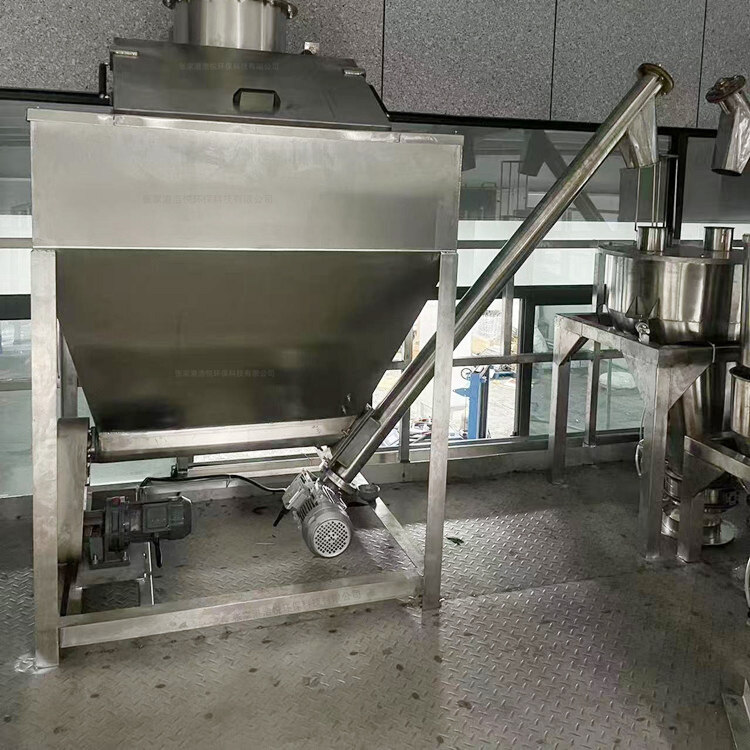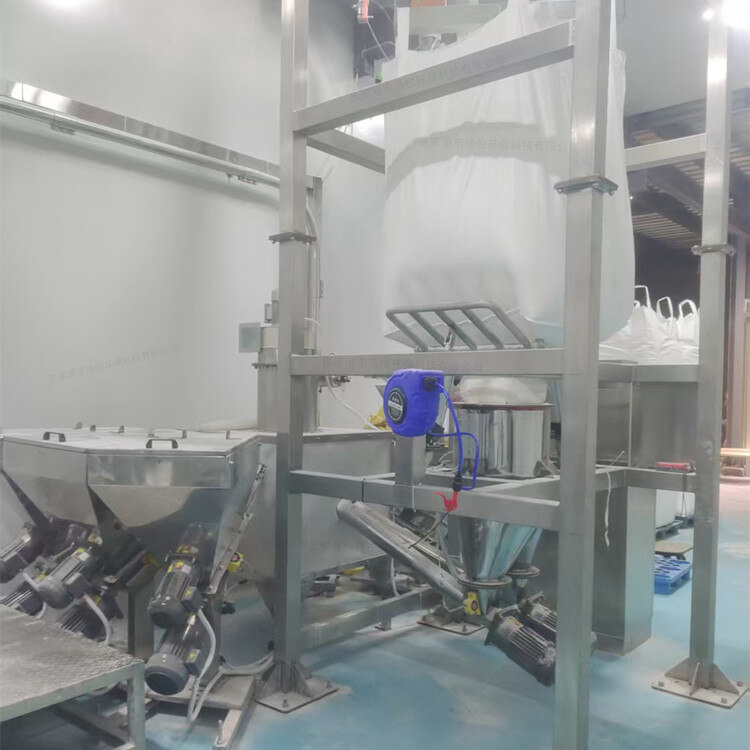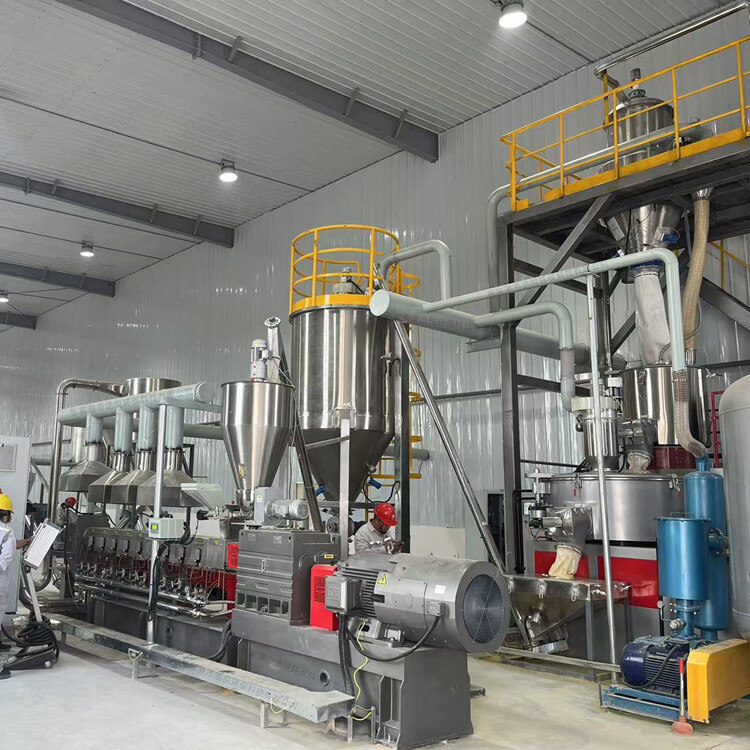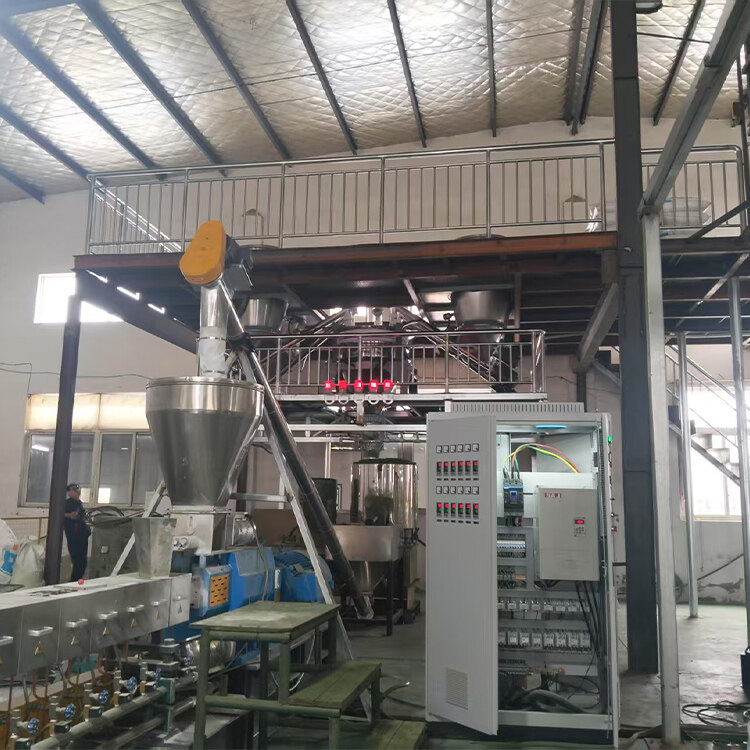- Introduction to automatic batching machine and fully automatic batching machine equipment
- The powder metering system tells you about the introduction of the mixing and drying machine
- 1000kg vacuum feeding machine
- Fully automatic small material batching system
- Research on Innovation of Automatic Weighing Machine Technology
- Design and operation of automatic batching system using PLC, industrial computer and frequency converter
feeding machine
- Category:Batching Plant
- Hits:131次
- Release Date:2025-06-30
- Share:
- Inquiry
- Details
In modern industrial production processes, from the proportioning and mixing of chemical raw materials to the addition of food and beverage raw materials, from the input of metallurgical smelting materials to the ingredient production of building materials, feeders play an indispensable role. It accurately and efficiently delivers materials to designated locations through automation or semi automation, greatly improving production efficiency and reducing labor costs. The following will provide a comprehensive and in-depth introduction to the structure, working principle, classification characteristics, application scenarios, and development trends of the feeding machine.
1、 Structure and Working Principle of Feeding Machine
(1) Basic structural composition
The feeder usually consists of five main parts: material storage unit, metering unit, conveying unit, control unit, and auxiliary unit.
Material storage unit: This is the basic part of the feeder for storing materials. The material and design of the storage unit vary depending on the form (powder, particle, liquid, etc.) and characteristics (such as corrosiveness, moisture absorption) of the materials. For example, for powdered materials, sealed silos are often used and equipped with level sensors to monitor material inventory in real-time; For corrosive liquids, tanks made of corrosion-resistant materials will be used.
Measurement unit: As a core component for achieving precise feeding, the measurement unit can control the amount of material added through volume measurement, mass measurement, or flow measurement. Common equipment includes weighing sensors, volumetric metering pumps, flow meters, etc., which can accurately adjust the amount of material added according to production needs.
Conveyor unit: responsible for transporting materials from the storage unit to the target location, with various conveying methods such as mechanical conveying (screw conveying, belt conveying), pneumatic conveying, liquid pumping, etc. Different conveying methods are suitable for materials with different characteristics to ensure that there is no leakage, blockage, or deterioration during the conveying process.
Control unit: It is the "brain" of the feeding machine, usually composed of PLC (Programmable Logic Controller), industrial computer or intelligent control system. The operator sets the feeding parameters (such as material type, amount, feeding speed, etc.) through the human-computer interaction interface, and the control unit coordinates the work of each unit according to the preset program, and monitors and adjusts the feeding process in real time to ensure feeding accuracy and stability.
Auxiliary unit: including dust removal device, cleaning system, safety protection equipment, etc. Dust removal devices are used to reduce dust pollution during the transportation of powdered materials; The cleaning system can regularly clean the interior of the equipment to prevent material residue and cross contamination; Safety protection equipment ensures the safety of operators and equipment.
(2) Working principle
The workflow of the feeder revolves around "storage metering conveying addition". Firstly, the materials are stored in the silo or storage tank. Upon receiving the feeding instruction, the control unit activates the conveying unit to transport the materials to the metering unit. The measuring unit accurately weighs or measures the material according to the preset measurement value, and stops feeding when the set amount is reached. Subsequently, the conveying unit is restarted to transport the measured materials to the target location, such as the reaction kettle, mixer, or production line station, completing a feeding operation. Throughout the entire process, the control unit continuously monitors the data of each link. Once any deviation occurs, automatic adjustments are made immediately to ensure the accuracy of the feeding process.
2、 Classification and Characteristics of Feeding Machines
(1) Classify by material form
Powder material feeder: suitable for powder materials such as flour, cement, coal powder, etc., commonly using screw feeders, disc feeders, etc. This type of feeder pushes materials through screw rotation or disc rotation, which has the characteristics of good sealing and accurate measurement, and can effectively prevent dust from flying.
Granular material feeder: For granular materials such as grains, sand and gravel, plastic particles, etc., belt feeders and vibration feeders are commonly used. Belt feeder has a large conveying capacity and high stability; The vibrating feeder uses vibration to make the material fall evenly, suitable for materials with uneven particle size.
Liquid material feeder: mainly used for adding liquids such as water, ink, coatings, etc. Common equipment includes gear pump feeder and plunger pump feeder. This type of feeder controls the liquid flow rate through the pressure of the pump, enabling precise metering and adjusting the conveying pressure and speed according to demand.
(2) Classified by degree of automation
Manual feeder: The operation process mainly relies on manual control and is suitable for small-scale production or experimental scenarios. It has a simple structure and low cost, but the feeding accuracy and efficiency are relatively low, and the labor intensity is high.
Semi automatic feeder: Some processes are automated, such as material conveying or metering, which are completed by equipment, while manual operation is still required for start stop and parameter setting. Compared to manual feeders, its efficiency and accuracy have been improved.
Fully automatic feeding machine: The entire process from material storage, measurement to transportation and addition is automatically completed by the control system, which has the advantages of high precision, high efficiency, and low labor cost, and is widely used in large-scale industrial production.
3、 Application scenarios of feeding machine
(1) Food and beverage industry
In food processing, the feeding machine is used to accurately control the amount of sugar, salt, essence, additives and other materials added to ensure the consistency of product taste and quality. For example, in the process of beverage preparation, precise measurement of raw materials such as water, juice concentrate, sweeteners, etc. is carried out through a liquid feeder; When making baked goods, use a powder material feeder to accurately add flour, yeast, sugar powder, etc., to improve production efficiency and product qualification rate.
(2) Chemical industry
In chemical production, feeders can achieve safe and precise addition of hazardous materials such as corrosive, flammable, and explosive materials. In the production process of coatings, precise control of the ratio of resin, solvent, pigment and other raw materials can improve the performance of coatings; In the field of petrochemicals, automatic addition of catalysts and additives helps to improve chemical reaction efficiency and product quality.
(3) Pharmaceutical industry
The pharmaceutical industry has extremely high requirements for the precision and hygiene of material addition. Feeding machines can ensure the precise ratio of active ingredients and excipients in drugs, avoiding contamination and errors caused by manual operation. At the same time, the material and design of the equipment comply with GMP (Good Manufacturing Practice) requirements, ensuring the compliance and effectiveness of drug production.
(4) Metallurgical industry
In the process of steel and non-ferrous metal smelting, the feeder is used to precisely control the input of materials such as ore, coke, additives, etc., optimize the smelting process, improve the purity and quality of metal products, and reduce energy consumption and raw material waste.
4、 The development trend of feeding machines
With the continuous advancement of industrial technology, feeders are developing towards intelligence, integration, and green direction. In terms of intelligence, artificial intelligence and machine learning algorithms are introduced to enable feeding machines to have self-learning and adaptive capabilities, and to automatically optimize feeding parameters based on production data; In terms of integration, it deeply integrates with the enterprise's ERP (Enterprise Resource Planning) and MES (Manufacturing Execution System) to achieve collaboration in production planning, material management, and feeding operations; Greening is reflected in reducing equipment energy consumption, minimizing material waste, and adopting environmentally friendly materials and processes to meet the needs of sustainable development. In addition, the application of micro nano technology will also promote the development of feeding machines towards high-precision and trace feeding, meeting the special requirements of emerging industries for material addition.


